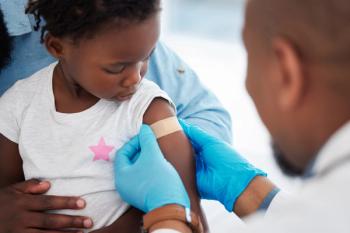
AAP shifts focus for managing child obesity
The American Academy of Pediatrics (AAP) has unveiled new recommendations for pediatricians treating children and adolescents who have become obese.
Research and clinical approaches for managing obesity in children and adolescents typically stress intervention, but updated recommendations from the
“What I see as really central here is the whole question about how to think about the development of obesity. We know that it is really hard to treat once it develops. So I think we would really benefit from a philosophy that is really preventive in its focus,” says
Daniels says pediatricians should be offering education and behavior enhancement for all families, but focusing their efforts on those families with a history or progression toward obesity. “They ought to be the focus of much more intensive interactions around their diet and their physical activity,” he says.
Pediatricians know firsthand the struggles with managing
According to the Centers for Disease Control and Prevention, childhood obesity rates have more than doubled among children and quadrupled among adolescents over the last 30 years.
In its
“In looking at the literature, many principles that have been learned in the treatment of obesity can actually be applied in prevention,” he says, discussing how the new recommendations were created. “It’s changing behaviors, and focusing on specific areas related to diet or activity. While we do need more prevention research, we’re actually in a better position than we might have been because of the treatment studies.”
The role of the pediatrician may be more difficult than a primary care physician in dealing with obesity prevention, however, because their patients don’t have as much control over their nutritional options and physical opportunities.
“What I think often parents don’t recognize is they are and should be in control of the food environment at home and they also have a major impact on how their kids organize their days and what their opportunities for physical activity are,” Daniels says.
Because this changes as children reach different stages of development, the pediatrician must educate both the child and the family to create a culture of nutrition and activity. With so many things to cover at pediatric appointments, this can prove challenging-and frustrating.
Pediatricians should focus their obesity prevention teachings on the higher-risk families and children. In families that have a history of obesity, there may be a hesitation to change lifestyles at the parent level, or the parents may be in denial that their child is at risk of developing obesity. Regardless, Daniels says the key-especially for these high-risk children-is to educate early and often.
“The first step is to not assume that what you say will go in one ear and out the other. We’ve seen it over and over again with things like cigarette smoking and overweight adults. Parents at some level really want the physician to address this. When the physician doesn’t address it or glosses over it, they get the feeling the physician doesn’t care,” Daniels says.
Accusatory language or a list of do’s and don’t’s can alienate a patient and their family, however, and pediatricians must build relationships with their patients and families to understand their individual needs and customize their approach to each situation.
In many cases, Daniels says
Pediatricians should stress to parents that, although they might like to give their children choices in what they eat, they have the ability to create a household in which every choice is a good choice.
“They ultimately really are in control of that environment,” Daniels says. “If parents decide what the home environment is like, they can let kids make their own decisions because everything in that environment is healthy.”
Tastes-for both children and adults-are developed in part by what the body needs and what a person likes, and also by stimulus control, he says.
“Visual cues turn out to be very important,” he explains. “If you’re going to have the snacks available, wrap them in aluminum foil.”
Although this is just one suggestion, Daniels says there are a host of other ways pediatricians can teach parents to modify their home environment to support healthy eating and an active lifestyle.
Other recommendations in the report include involving the family in interventions, using behavioral modification techniques, and helping parents develop their communication skills. Of course, the report recommends specific actions such as removing sugar-sweetened beverages, encouraging patients to eat breakfast daily, and being aware of the high-calorie content of restaurant and fast-food meals when eating out. In terms of activity, the report recommends at least 60 minutes of moderate to vigorous
In addition to the recommendations outlined in the updated guidance, Daniels says he would like to see pediatricians emphasize their role within the larger community as a resource for childhood health and wellness.
“I think we all get the concept that there’s a lot we can do in the office, but there are more issues, and some of them are environmental and cultural,” he says.
Pediatricians should reach out to schools and communities through policy development, partnering with wellness programs, or creating nutritional plans at schools.
“I would hope we would get to a world where legislators in the community or school boards would consult with a pediatrician,” Daniels says. “Pediatricians haven’t always seen themselves in that role and haven’t always made themselves available for that. We need to get them to realize they are an important voice in the community.”
Newsletter
Access practical, evidence-based guidance to support better care for our youngest patients. Join our email list for the latest clinical updates.










